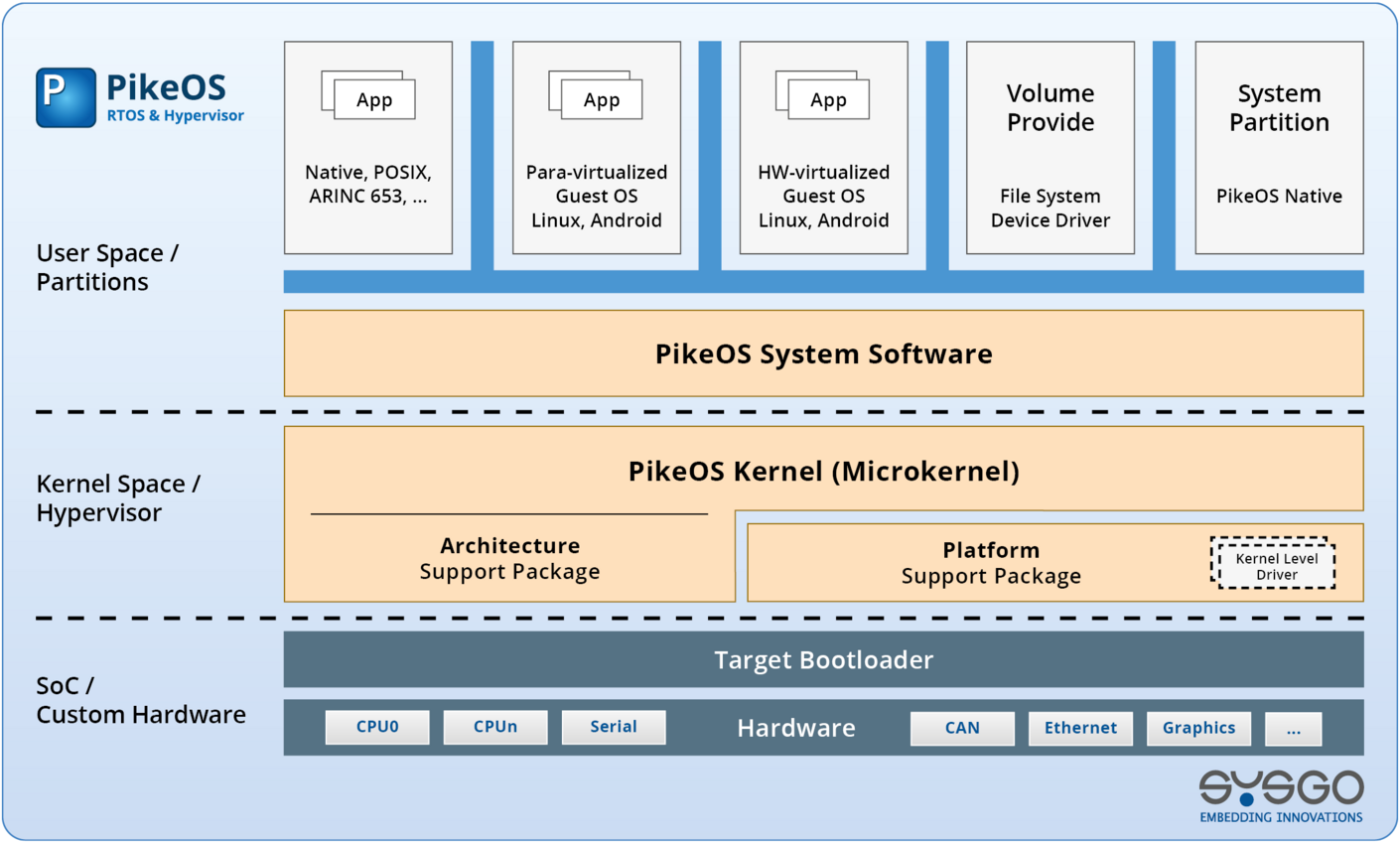Next-Gen Avionics Mission Computers
Consolidating multiple flight functions on a single, Safety-certified platform
Spacecraft Payload Control Units
Managing scientific instruments and communication links in harsh Space environments
Automotive Domain Controllers
Integrating infotainment, ADAS, and vehicle control on shared hardware
Railway Train Control Systems
Providing deterministic control and secure communication for signalling and operations
Industrial Automation Gateways
Bridging field devices with enterprise systems under strict real-time constraints
Medical Diagnostic Systems
Running imaging, analysis, and control software with strong isolation for patient Safety
Helps Scaling of Platform / Product Development
- RTOS and hypervisor in one integrated product, supporting a wide range of guest OS, such as POSIX, Linux, Android, Windows, ARINC 653, AUTOSAR, and more
- Start feature development early and certify later
- Combine Safety and Security in a single system with mixed-criticality partitions
- Modular architecture allows incremental platform growth without redesign
Hardware Consolidation
- Run multiple guest OS instances on a single hardware platform
- Broad support for leading hardware architectures (x86, ARM, PowerPC, RISC-V)
- Supports MMU and MPU for different system designs
- Includes ARM TrustZone for secure partitioning
- Hardware virtualization support, e.g., for high-performance graphics or I/O acceleration
Safety & Security Certification
- Single certifiable RTOS & hypervisor platform for both functional Safety and IT Security compliance
- Supports highest Safety (e.g. DO-178C DAL A, ISO 26262 ASIL D or EN 50128 SIL 4) and Security standards (Common Criteria EAL 5+)
- Certification artefacts and process documentation available for rapid approval cycles
- Enables mixed-criticality integration while maintaining isolation and determinism
Reduction of Time-to-Market
- Seamless integration of third-party applications
- Fast and intuitive project configuration tooling
- Access to pre-qualified certification artefacts to speed up approval processes
- Rich ecosystem of BSPs and reference configurations for quick hardware bring-up
Operational Efficiency
- Reduced SWaP-C (Size, Weight, Power, and Cost) through consolidation
- Simplified maintenance with long-term support options
- Easier reuse of existing code and certification evidence across projects
ITAR free
Our products are not subject to U.S. ITAR (International Traffic in Arms Regulations), reducing export restrictions and simplifying global deployment



